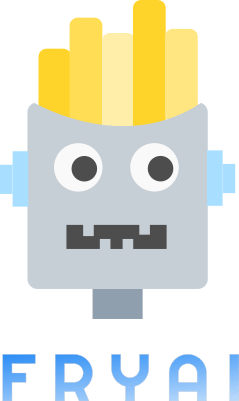- FryAI
- Posts
- Nvidia to enter "robotic AI" era
Nvidia to enter "robotic AI" era

Good morning! Are your taste buds tingling? Because our AI insights are bursting with salty flavor. 🍟
🚨 Thank you to everyone who followed along with our updates this year. We have high hopes and a lot in store for 2025!
🤯 MYSTERY AI LINK 🤯
(The mystery link can lead to ANYTHING AI-related: tools, memes, articles, videos, and more…)
Today’s Menu
Appetizer: Nvidia to enter “robotic AI” era 🦾
Entrée: Instagram teases new video editing tool 🎥
Dessert: New Chinese AI thinks it is ChatGPT 👀
🔨 AI TOOLS OF THE DAY
🤖 SmythOS: Build, debug, and deploy AI agents with no code. → Check it out
🥗 Vesse: Analyze and track your nutritional journey. → Check it out
🛍️ Listize (App): Create an AI-powered shopping list. → Check it out
NVIDIA TO ENTER “ROBOTIC AI” ERA 🦾
Beware of robot dogs—they tend to byte. 🐕
What’s new? With the humanoid robotics industry projected to grow to $195 billion by 2029, NVIDIA is set to launch its “Jetson Thor” series of compact computers in early 2025. These devices are designed to provide the computational power essential for advanced robotics, including real-time interaction and model training.
Want the details? The company is leveraging its existing strengths, such as the Omniverse platform and Isaac software, to create virtual environments that simulate and refine robotic behaviors. This ecosystem supports seamless development, bridging the gap between virtual models and physical robots. As competition in AI chipmaking intensifies, Nvidia sees humanoid robots as a new frontier for growth.
INSTAGRAM TEASES NEW VIDEO EDITING TOOL 🎥
I told my friends that I’m an Instagram model. “Unemployed” just doesn’t have the same ring to it. 😅
What’s up? Adam Mosseri, the head of Instagram, has teased a new AI tool to edit and enhance short-form videos in seconds. To come in 2025, this tool will enable Instagram users to alter nearly any aspect of their videos with a simple text prompt.
How does it work? The coming tool is powered by MovieGen, a video generation model previewed by Meta in October to “preserve human identity and motion” in the videos it creates or edits. In a video (above), Mosseri showcased MovieGen’s ability to seamlessly modify backgrounds, clothing, and even appearances. In the demonstration, Mosseri’s outfit changed, environments shifted, and he was transformed into a felt puppet. Subtle enhancements, like adding a gold chain or objects to a background, also maintained realism during movement.
Why is this significant? This new tool is likely one of many to come across social media platforms in the coming year, as AI continues to transform how we communicate and interact online. It also reflects the industry’s latest push for AI video creation and editing, highlighted by OpenAI’s Sora, Google’s Veo 2, and more. If 2024 was about deepfake images, 2025 will be about deepfake videos.
NEW CHINESE AI THINKS IT IS CHATGPT 👀
This actually reproduces as of today. In 5 out of 8 generations, DeepSeekV3 claims to be ChatGPT (v4), while claiming to be DeepSeekV3 only 3 times.
Gives you a rough idea of some of their training data distribution.
— Lucas Beyer (bl16) (@giffmana)
10:12 AM • Dec 27, 2024
People tell me I tend to overthink things … but do I really? 🙃
What’s up? DeepSeek, a prominent Chinese AI lab, recently unveiled DeepSeek-V3, a powerful text-processing model that outperforms its rivals on benchmarks. But there’s a catch: It thinks it is ChatGPT.
Want the details? DeepSeek created its V3 model in just two months, spending only $5.57 million. To put this in perspective, Meta spent over $500 million to train Llama 3.1. Although this seems impressive on the surface, critics worry that the model was trained on ChatGPT outputs. When asked (above), DeepSeek V3 insists it’s OpenAI’s GPT-4, even offering instructions for using OpenAI’s API and recycling GPT-4’s jokes. This strange behavior suggests that DeepSeek’s training data may have included outputs from GPT-4, causing the model to mimic its predecessor. If this is the case, it raises ethical (and possibly legal) concerns, as OpenAI prohibits using its outputs to train competing models. The issue also highlights a growing problem in AI development: datasets flooded with AI-generated content. As the internet increasingly hosts machine-created text, distinguishing genuine information from regurgitated AI outputs will become more and more challenging, threatening the integrity of future AI systems. Experts warn this approach could eventually degrade model quality, akin to making a photocopy of a photocopy.
TWITTER (X) TUESDAY 🐦
I used ChatGPT for time management and the results shocked me.
Here are 10 powerful prompts that made me more productive:
— Ryan Lazuka (@lazukars)
7:11 AM • Dec 30, 2024
HAS AI REACHED SINGULARITY? CHECK OUT THE FRY METER BELOW:
What do ya think of this latest newsletter? |



